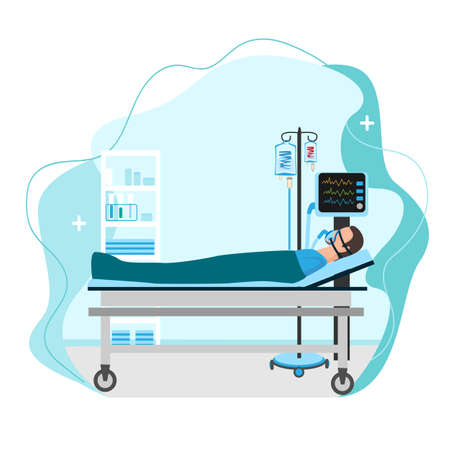Introduction to Non-Surgical Butt Lifting
In the ever-evolving world of aesthetic medicine, non-surgical body contouring has rapidly gained traction across the United States, reflecting a broader cultural shift toward minimally invasive cosmetic enhancements. As Americans increasingly seek ways to achieve their desired physique without the downtime and risks associated with traditional surgery, innovative technologies like radiofrequency (RF) and ultrasound have emerged as popular options for non-surgical butt lifting. These cutting-edge treatments promise to lift, tighten, and enhance the appearance of the buttocks—no scalpel required. But with both options widely available and heavily marketed in medspas and dermatology clinics nationwide, consumers are left wondering: which method is truly more effective for achieving that coveted sculpted look? This article explores the trend of non-invasive butt lifting in the U.S., sets the stage for understanding RF and ultrasound technologies, and offers a data-driven look at which treatment may deliver the best results for today’s beauty-savvy patients.
How Radiofrequency Butt Lifting Works
Radiofrequency (RF) technology has quickly become a sought-after solution for non-surgical butt lifting in the United States, thanks to its reputation for safety, minimal downtime, and reliable results. But how exactly does RF deliver that coveted lift and firmness? Understanding the science behind radiofrequency butt lifting helps explain its growing popularity across medspas and dermatology offices nationwide.
The Science Behind Radiofrequency Devices
RF devices use targeted electromagnetic waves to generate controlled heat within the deeper layers of the skin, specifically the dermis. This process safely bypasses the skin’s surface, focusing energy where it matters most for tissue remodeling. The heat causes immediate contraction of collagen fibers while also triggering the body’s natural wound-healing response. Over time, this leads to increased collagen and elastin production—key proteins responsible for skin’s tightness and elasticity.
Key Effects of Radiofrequency on Skin
| Effect | Description |
|---|---|
| Collagen Stimulation | RF energy boosts new collagen formation, leading to firmer, plumper skin over several weeks. |
| Skin Tightening | Immediate contraction of existing collagen gives a subtle lift, with progressive tightening as new collagen forms. |
| Fat Reduction (in some cases) | Certain RF devices also target subcutaneous fat cells, contributing to contour improvement. |
| No Surface Damage | The outer layer of skin remains intact, minimizing risk and downtime compared to invasive procedures. |
Why Americans Are Embracing RF Butt Lifting
This technology fits seamlessly into busy American lifestyles. Most treatments take less than an hour, require little to no recovery time, and can be performed during a lunch break. Plus, clients appreciate that results appear gradually, offering a natural-looking enhancement rather than an overnight transformation. As demand rises for safe and effective body contouring solutions without surgery or injections, radiofrequency butt lifting stands out as a proven option in the competitive U.S. aesthetics market.

3. How Ultrasound Butt Lifting Works
Ultrasound technology is making waves in the world of non-surgical body contouring, and its role in butt lifting is both innovative and effective. Unlike radiofrequency, ultrasound uses focused sound waves to penetrate deep beneath the skin’s surface, reaching layers where stubborn fat and connective tissue reside. This process, commonly referred to as High-Intensity Focused Ultrasound (HIFU), delivers targeted energy that heats up fat cells and underlying tissues without damaging the outer layer of skin.
The real game-changer with ultrasound butt lifting lies in its precision. The sound waves can be calibrated to specific depths, which means practitioners can customize treatments based on each patient’s anatomy and desired results. Once the energy reaches the right layer, it causes thermal coagulation—essentially heating the tissues enough to break down fat cells while simultaneously tightening collagen fibers.
This dual-action approach not only helps reduce unwanted fat deposits but also stimulates natural collagen production. The result is a noticeable lifting effect as the body gradually flushes out destroyed fat cells through natural metabolic processes and new collagen provides firmer, more youthful-looking skin. For many clients seeking a perkier silhouette without downtime or surgery, ultrasound offers an attractive, minimally invasive option that leverages advanced technology for safe and visible results.
4. Comparing Results: RF vs. Ultrasound
When it comes to butt lifting procedures, Americans are not just looking for a subtle lift—they want noticeable contouring, firmer skin, and results that look natural yet transformative. Let’s break down the clinical outcomes, patient satisfaction, and typical expectations when comparing Radiofrequency (RF) and Ultrasound technologies.
Clinical Outcomes
| Treatment | Main Mechanism | Tightening Effect | Fat Reduction | Downtime |
|---|---|---|---|---|
| Radiofrequency (RF) | Thermal stimulation of collagen and elastin production | Moderate to significant (especially for mild sagging) | Mild to moderate | Minimal |
| Ultrasound | Focused sound waves targeting deep tissue layers | Mild to moderate (best for deeper tissue tightening) | Moderate (more effective for localized fat deposits) | Minimal to none |
Patient Satisfaction & Preferences
The American aesthetic ideal emphasizes both shape enhancement and skin texture improvement. According to recent surveys:
- RF treatments: Patients often report visible lifting, smoother skin, and high satisfaction with the feel of treated areas. Those with early signs of sagging particularly appreciate the subtle but cumulative improvements after a series of sessions.
- Ultrasound treatments: Clients seeking more defined sculpting or reduction of stubborn fat bulges generally rate ultrasound higher. While some experience less dramatic skin tightening compared to RF, many note a firmer underlying structure and enhanced butt contour over time.
What Results Do Americans Typically Want?
- Lifting + Volume Enhancement: Most patients prefer a rounded, lifted appearance rather than an overly “snatched” look.
- Smooth Skin Texture: Reduction in cellulite and dimpling is highly valued.
- No Downtime: Non-invasive options with minimal interruption to daily life are a major priority.
- Sustained Results: Gradual improvements that can be maintained with occasional touch-ups are favored over one-time drastic changes.
Bottom Line: Tailored Choices Matter
The decision between RF and ultrasound often depends on individual goals—RF may be best for those prioritizing skin tightening and surface smoothing, while ultrasound suits those looking for deeper tissue sculpting and modest fat reduction. Many American providers now offer combination protocols to deliver synergistic benefits, maximizing both lift and contour for optimal satisfaction.
5. Safety Profiles and Side Effects
When considering butt lifting treatments, understanding the safety profiles and potential side effects of radiofrequency (RF) versus ultrasound technologies is crucial for U.S. patients. Both options are non-surgical and generally considered safe, but they do come with unique risks and post-treatment experiences that you should factor into your decision.
Radiofrequency: What to Expect
Radiofrequency butt lifting devices use heat to stimulate collagen production and tighten skin. The treatment is typically well-tolerated, with most patients reporting mild redness, swelling, or a warm sensation in the treated area. These effects usually resolve within a few hours to a couple of days, meaning downtime is minimal. Rarely, some people may experience temporary bruising or minor burns if the device isn’t used properly. For best results and safety, always choose a board-certified provider experienced in RF body contouring.
Ultrasound: Potential Risks and Recovery
Ultrasound-based butt lifts use focused sound waves to target deeper tissue layers. Most American patients report little to no downtime—many return to work or daily activities immediately after the session. However, temporary side effects like mild swelling, tingling, or tenderness can occur. In rare cases, more pronounced bruising or numbness may develop, but these issues tend to resolve within a week or two. Adverse events are uncommon when treatments are administered by qualified professionals using FDA-cleared devices.
Comparing Downtime
For both RF and ultrasound, downtime is generally minimal compared to surgical alternatives such as Brazilian Butt Lift (BBL). Most individuals experience only short-term discomfort or redness rather than lengthy recovery periods. This “lunchtime procedure” appeal is a key reason why these technologies have gained popularity among busy Americans seeking fast, low-risk enhancements.
Who Should Be Cautious?
Certain groups should consult closely with their provider before undergoing either treatment. If you have metal implants, pacemakers, severe skin conditions, or are pregnant, you may not be a good candidate for RF or ultrasound procedures. Always disclose your full medical history during your consultation so your provider can ensure maximum safety.
The Bottom Line on Safety
Both radiofrequency and ultrasound butt lifting technologies offer favorable safety profiles when performed by trained professionals on appropriate candidates. While minor side effects are possible with either method, serious complications are rare in the U.S. patient population. As with any cosmetic procedure, choosing an experienced provider and following all pre- and post-care instructions will help minimize risks and optimize your results.
Cost, Accessibility, and Popularity in the U.S. Market
When it comes to choosing between radiofrequency (RF) and ultrasound treatments for butt lifting, the American market has some clear trends and considerations. In terms of procedure pricing, RF sessions typically range from $300 to $800 per treatment area, depending on the device brand, provider expertise, and geographic location. Ultrasound-based body contouring—such as those using high-intensity focused ultrasound (HIFU)—can cost anywhere from $500 to $1,200 per session. Most patients require multiple sessions for optimal results, which makes cost a significant factor for many.
Accessibility is another major consideration. RF technology has been widely adopted by medspas and aesthetic clinics across the U.S., thanks to its versatility and established safety profile. Many providers already offer RF devices for various skin-tightening and contouring procedures, making it easy for consumers to find a nearby clinic that offers butt lifting with this technology. On the other hand, ultrasound-based treatments are less common but are gaining traction in urban centers and high-end practices that cater to clients seeking cutting-edge solutions.
When we look at popularity among U.S. consumers, RF still leads the pack. Its longer history in the market and generally lower price point have contributed to its mainstream status. Social media influencers and celebrity endorsements have also played a role in making RF a household name in non-surgical body sculpting. However, ultrasound technologies are becoming more popular among trend-conscious consumers who are looking for the latest advances with minimal downtime.
In summary, while both technologies are accessible in the United States, RF currently dominates due to broader availability and affordability. Ultrasound is emerging as a premium option that appeals to a niche segment focused on innovation and subtle enhancement. Ultimately, consumer choice often comes down to budget, provider recommendation, and individual goals—factors that continue to shape the landscape of non-surgical butt lifting across America.
7. Choosing the Right Treatment: What Americans Should Consider
When it comes to deciding between radiofrequency (RF) and ultrasound butt lifting treatments, American consumers should weigh several personal factors to find the best fit. First, consider your body type: RF often delivers noticeable skin-tightening results for those with mild to moderate sagging, while ultrasound may be better suited for individuals seeking deeper tissue stimulation or enhanced collagen production. Next, clarify your goals—are you aiming for subtle contouring or a more dramatic lift? Your desired outcome will influence which technology aligns better with your expectations. Lifestyle is another key consideration. Busy professionals might prefer RF due to its shorter recovery time and minimal aftercare, whereas those comfortable with a slightly longer downtime may benefit from the cumulative effects of ultrasound sessions. Budget also matters; compare pricing structures and available packages in your area, as costs can vary widely depending on the provider and number of sessions needed. Finally, consult with a board-certified practitioner who understands American beauty standards and can customize a treatment plan that fits your unique anatomy and lifestyle. By factoring in these elements, you’ll be well-equipped to choose the most effective butt lifting solution tailored to your individual needs.

